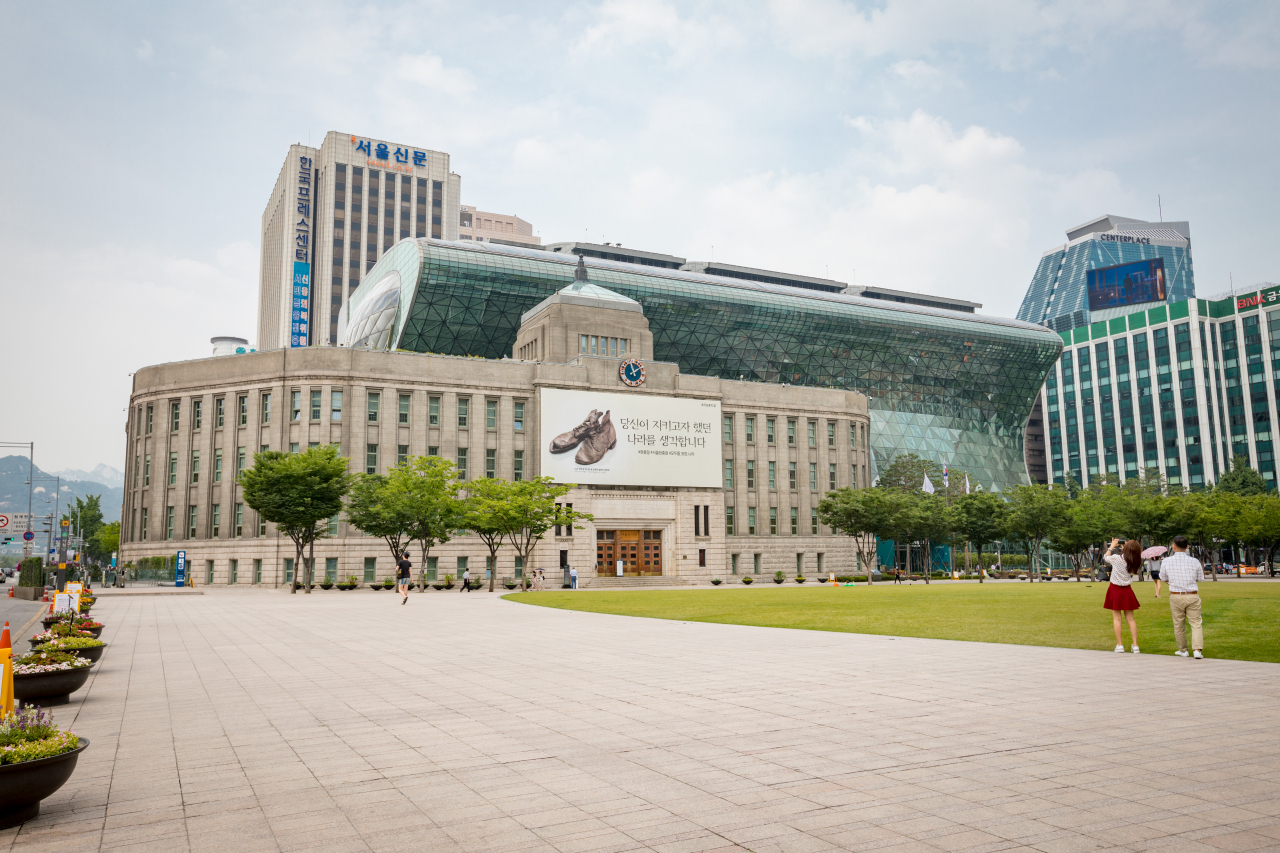 |
Seoul City Hall (123rf) |
The Seoul Metropolitan Government announced Tuesday that the city aims to reduce carbon emissions by 50 percent by 2033 from the 2005 levels, and reach complete carbon neutrality by 2050.
With the ambition of building a city safe from climate crises, the city has announced its new 10-year plan, named the Basic Plan for Carbon Neutrality and Green Growth in Seoul, which includes carbon-neutral and eco-friendly energy transition policies to cut carbon emissions by 50 percent by 2033 compared to 2005 levels. The capital’s carbon emissions were recorded at 52.34 million tons in 2005. To this end, the city has decided to focus on the building and transportation sectors as they make up 85 percent of Seoul's total greenhouse gas emissions.
First, to reduce greenhouse gases emitted from buildings, which are one of the largest emitters in the city, the city will improve the energy efficiency of old buildings. Buildings in the capital contribute to 67 percent of the city’s total greenhouse gas emissions. The city plans to support long-term interest-free loans to improve energy efficiency in old buildings and to promote projects such as replacing insulation windows, insulation materials, and high-efficiency equipment-certified products.
Also, the city plans to require newly-built public buildings to be ZEB grade 4 by 2030, and ZEB grade 3 by 2050. The city government currently requires newly built public buildings to be ZEB grade 5. ZEB, or Zero Energy Building, refers to construction characterized by zero net energy consumption and zero carbon emissions calculated over some time. A building is considered ZEB grade 5 when renewables cover between 20 and 40 percent of energy needs and is grade 1 when it is higher than 100 percent.
Second, the capital aims to cut carbon emissions emitted from the transportation sector. To this end, the city plans to accelerate replacing combustion engines with EVs. The city is now providing subsidies for electric vehicles and improving charging infrastructure to reach 279,000 EVs by 2033, the city official said.
Also, the Seoul city government will additionally ban Grade 4 diesel vehicles, the second lowest in the country's five-tier emission standard, from the city's central areas, so-called green transport zones, starting in 2025 to dramatically reduce air pollutants. Grade 4 applies to vehicles that produce 0.5 grams or more of carbon monoxide per kilometer among other pollutants. Cars in that category produce six times more fine dust than those Grade 3 cars.
Currently, Grade 5 diesel vehicles are banned across Seoul from December to March and in the central Seoul areas throughout the year. In 2030, the city plans to adopt a blanket ban on Grade 4 vehicles across Seoul, while all cars powered by internal combustion engines will be banned in central Seoul starting in 2035 and across the city in 2050.
In addition, the city will reduce road lanes to create more sidewalks, bike paths and green spaces.
Furthermore, the city plans to expand the eco mileage program, which rewards citizens who practice greenhouse gas reduction through energy conservation and other means.
“Carbon neutrality is our generation's duty that cannot be delayed any longer for future generations. It is not an easy goal, but we will create results through energy saving in which citizens participate,” said Yeo Jang-kwon, head of the Climate and Environment Headquarters at the city government.





![[Herald Interview] How Gopizza got big in India](http://res.heraldm.com/phpwas/restmb_idxmake.php?idx=644&simg=/content/image/2024/11/20/20241120050057_0.jpg)

